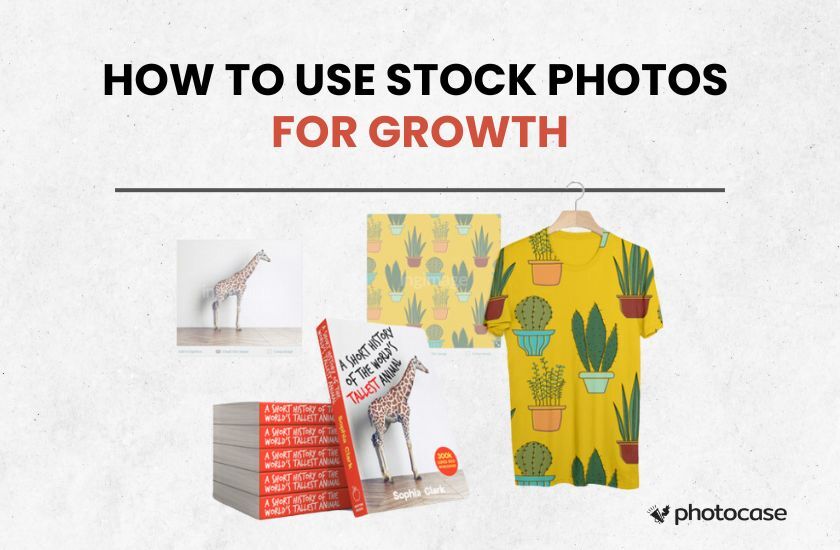The image agency Photocase is closed. A new blog is being created here, focusing on stock photography and image agencies.

Pricing stock photography is an art, shaped by market demand, image uniqueness, and usage intent. Dive into this article to uncover savvy pricing strategies and gain insights into average rates for stock photos.
Setting prices for stock photos can vary based on different factors. Research similar images online to gauge pricing trends and consider your own costs and desired profit margin when determining your rates. Here are some key considerations:

Image quality: Higher resolution images often come at a premium.
License terms: Royalty-free images typically cost less than rights-managed or exclusive licenses.
Usage rights: Costs increase with broader usage rights, such as for commercial or unlimited distribution.
Exclusivity: Exclusive images that aren’t used by others are usually more expensive.
Photographer reputation: Work by well-known photographers can command higher prices.
Market demand: Unique or high-demand subjects may cost more than generic or widely available ones.
Subscription plans vs. one-time purchase: Subscriptions often reduce per-image costs compared to individual purchases.
Platform or agency fees: Prices vary between stock photo websites and agencies.
Pricing your stock photography effectively requires a thoughtful evaluation of your images’ value. The following strategies can help ensure you set competitive yet profitable rates:
Evaluate Image Quality: High-resolution, well-composed, and professionally edited photos command higher prices. Buyers are often willing to pay a premium for technically excellent and visually striking content.

Analyze Subject Uniqueness: Images of rare or niche subjects are typically more valuable. For example, a photo capturing an obscure cultural festival or a rare animal species can justify a higher price due to limited competition.
Consider Usage Rights: Price images based on their intended use. For example, personal or editorial uses generally fetch lower prices, while commercial, advertising, or exclusive usage can significantly increase the value.
Research Market Trends: Study pricing on popular stock photography platforms. Identify trends in pricing for similar images to position your work competitively.
Assess Demand: Popular and trending topics, such as sustainability or remote work, often warrant higher pricing. Keep an eye on industry and cultural trends to align your offerings with buyer needs.
Factor in Licensing Models: Rights-managed licenses, offering exclusivity or limited usage, often allow for higher pricing than royalty-free licenses, which are more general.
Leverage Experience and Reputation: If you’re an established photographer with a strong portfolio, your work may command higher prices than less experienced contributors.
By combining market research, an understanding of your audience, and an honest appraisal of your work, you can confidently set prices that reflect the true value of your images.
Striking the right balance between competitive and profitable pricing for your stock photography is essential for success. Setting prices too low may undervalue your work, while pricing too high could deter potential buyers. Here are strategies to help you find the sweet spot:
Balancing competitiveness with profitability ensures you attract buyers while sustaining and growing your business in the long term.

Certain stock photo niches allow photographers to command premium prices due to high demand, limited supply, or specialized usage requirements. Here are the top niches where you can ask for the highest prices:
These niches cater to industries with consistent demand and budgets, enabling photographers to set higher price points.
As of 2025, the average pricing for stock photos can range from $1 to $500, depending on the factors mentioned above. Here’s a breakdown:
| Type of License | Average Price Range |
|---|---|
| Royalty-Free | $1 – $300 |
| Rights Managed | $50 – $500 |
| Editorial Use | $10 – $200 |
Royalty-Free (RF) licensing allows buyers to pay a one-time fee to use an image multiple times for various purposes, within the limits of the license. This model is non-exclusive, meaning the same image can be sold to multiple buyers.
Rights-Managed (RM) licensing involves tailored pricing based on specific usage details, such as purpose, duration, audience size, and geographic distribution. Buyers pay for the exact rights they need.
Editorial Use licenses restrict images to non-commercial purposes, such as use in news articles, blogs, or educational publications. These images often depict real-world events, recognizable individuals, or branded items that cannot be used commercially without proper permissions.
Each model caters to different buyer needs, and pricing reflects the scope and exclusivity of usage rights.
When determining how to price your stock photos, consider the following strategies:
Several factors can influence how you price your stock photography:
Marketing and promoting your stock photography business is crucial to standing out in a highly competitive industry. Start by building a professional online portfolio that showcases your best work, highlighting the variety and quality of your images. Include a clear call to action, such as directing visitors to stock platforms where your photos are available or providing an option to contact you directly for custom licensing.
Leverage social media to reach a broader audience. Platforms like Instagram, Pinterest, and LinkedIn are excellent for sharing visually engaging content. Use hashtags strategically to attract potential clients and participate in industry groups to network with other professionals and buyers. Consistently posting your work and engaging with followers helps to build your brand and establish credibility.
Invest in search engine optimization (SEO) for your website and image descriptions to make your portfolio more discoverable. Use relevant keywords that buyers are likely to search for, such as “high-resolution nature photography” or “urban lifestyle stock photos.”
Collaborate with blogs, brands, or publications to gain exposure and showcase your work to targeted audiences. You can also offer promotional deals, like discounts for first-time buyers or free downloads of watermarked images to encourage trial use.
Finally, consider submitting your images to multiple stock platforms to maximize visibility. Each platform has its own user base, increasing your chances of reaching a diverse audience. Consistent marketing efforts and high-quality work are key to building a successful stock photography business.
Here’s a breakdown to help you navigate the options:
| Stock Agency | Image Quality | Pricing (USD) | Licensing Type |
|---|---|---|---|
| Shutterstock | High | $10 – $200 | Standard/Enhanced |
| Adobe Stock | High | $29.99 – $199.99 | Standard/Extended |
| iStock | Medium to High | $12 – $150 | Standard/Exclusive |
| Getty Images | High | $50 – $500 | Rights Managed/Editorial |
The stock photography industry offers various pricing models, each with its advantages and drawbacks. Understanding these can help you choose the most suitable approach for your business.
Royalty-Free Licensing
Rights-Managed Licensing
Subscription Models
Pay-Per-Download
Exclusive Licensing
When considering stock photography, it’s crucial to weigh the pros and cons and understand the pricing structure.
Choosing the right pricing model for your photography business can make or break your success. Focus on who you’re selling to, what makes your images unique, and where you want to go long-term. Balance flexibility with profitability by researching industry rates—don’t undersell yourself or scare clients away with high prices. Understand what drives clients’ decisions and how much they’ll pay for top-notch photos. Offer varied packages that fit different budgets without compromising quality, and provide both online and in-person purchase options for convenience.
Transparency is key: clearly display pricing on your website to build trust from the get-go, ensuring smoother bookings down the line. Remember, knowing stock photography pricing intricacies—like licensing type and image exclusivity—is vital for navigating costs effectively as a buyer or seller.
THE AUTHOR
Christian Fischer

In today’s visually driven world, stock photography is a cornerstone of creativity and efficiency for individuals and enterprises alike. This comprehensive guide delves into its importance, versatile applications, and the wide array of professionals leveraging its potential, to help you understand why it is such a valuable resource and the ways in which you can take advantage […]

The advent of artificial intelligence has revolutionized various sectors, including the creation of digital imagery. AI-generated stock images are gaining traction among marketers, designers, and content creators for their unique qualities and versatility. This guide explores the advantages of these images, where to find them, and how to effectively incorporate them into your projects. Best […]

Dive into the world of Shutterstock Creative Flow, a dynamic platform that transforms your creative visions into reality. Whether you’re an expert designer or just starting out, this tool will elevate your projects to new heights. Discover its key features, unlock pro tips, and enhance your editing skills with our insightful guide. Key Features of the […]